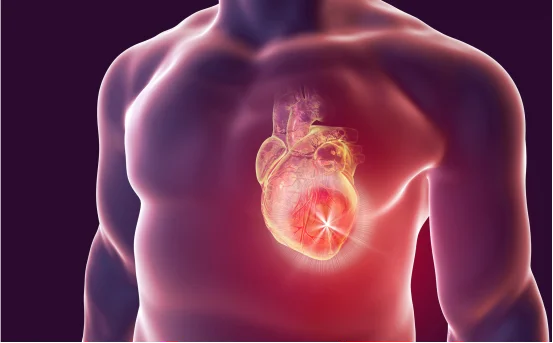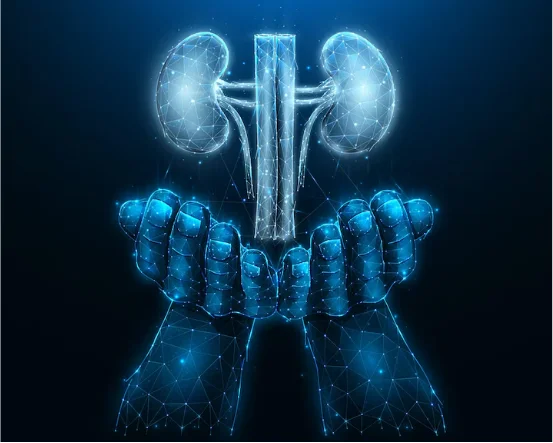Angina is also referred to as angina pectoris, and it is a pain in the chest due to an inadequacy of blood that is reaching the heart tissues. It is not a standalone condition, instead it is a sign of primary medical conditions, in most cases it is caused due to a coronary heart disease (CAD). The symptoms of Angina include a feeling of pressure, squeezing or fullness in the chest towards the shoulders, arms, neck, jaw and even back.
What Are The Causes Of Angina?
Understanding what is angina.
Angina results from the heart muscle being unable to receive sufficient oxygen-rich blood. The common reason for this is narrowed or blocked coronary arteries that result from the accumulation of plaque which is a part of a disease picture called atherosclerosis. It occurs more markedly during exercise or emotional excretion and also angina is likely to be experienced.
- Common causes include:
- Smoking
- Obesity
- High blood pressure
- High cholesterol
- Stress or anxiety
- Diabetes
- A sedentary lifestyle
The evolution and classification of angina helps define the correct approach towards treatment. The main types include the following:
1. Stable Angina
The most prevalent type. Usually occurs with exertion or stress and is relieved by rest and regime (often nitroglycerin).
Characteristics include:
- Short (5-15mins) and activity driven
- Predictability
2. Unstable Angina
This is a medical emergency. Unstable angina may not respond to rest or meds, is unpredictable and indicates greater chance of heart attack.
Key characteristics are;
- Longer duration with severe intensity
- Worsening over time
- Rest driven
3. Variant (Prinzmetal’s) Angina
This can occur due to spasm in the coronary arteries and is more medication responsive. It tends to happen more at rest.
Key characteristics are;
- Not caused by exertion
- Night and early morning predisposed
- Stress, cold, and smoking are triggers
4. Microvascular Angina
This affects small arteries in the heart while being more common in women. It can occur during activity and rest.
Signs of Angina
The symptoms of angina may differ with each person, as well as the type of angina they have. The most common symptoms are:
- Chest pain or discomfort (may feel like pressure, squeezing, or a full sensation)
- Radial pain to the arm, neck, jaw, or back muscles
- Nausea
- Fatigue
- Tachypnea
- Dizziness
- Diaphoresis
Women in particular may present with less common symptoms such as fatigue, back pain, or even indigestion.
Angina Diagnosis
If you are suffering from chest pain, you need to see a doctor urgently. A specialist in heart conditions may carry out the following tests:
- Electrocardiogram (ECG) – Evaluates the heart’s electrical activities.
- Stress test – Evaluates the working capacity of the heart.
- Echocardiogram – Employs ultrasound to visualize the heart.
- Blood tests for cardiac enzymes.
- Coronary angiography – X-ray for the presence of blockages in the coronary arteries.
- Cardiac CT or MRI – Performs detailed imaging of the heart.
Angina Treatment
Effective management of angina focuses on relieving pain, alleviating symptoms, and minimizing the likelihood of a heart attack. Possible treatments consist of the following:
1. Changes in Lifestyle
- Healthy changes are the first method of confronting angina:
- Cease tobacco usage
- Have a heart-healthy diet (minimal saturated fat and sodium)
- Exercise consistently
- Control stress levels
- Maintain an optimal weight
- Regulate blood pressure, cholesterol levels, and blood sugar levels
2. Treatment with Drugs
The following may be prescribed:
- Pain relief via nitrates such as nitroglycerin
- Reduction in heart workload from beta-blockers
- Relaxed arteries from calcium channel blockers
- Aspirin and similar medications to prevent clot formation
- Reduction in cholesterol via statins
- Managing blood pressure with ACE inhibitors
3. Surgical Interventions
In more severe instances:
Angioplasty and stenting – Utilizes a balloon to open narrowed arteries and places a stent to keep the artery open.
Coronary artery bypass grafting (CABG) – Uses vessels from other parts of the body to surgically bypass the blocked artery.
Prevention of Angina
To avoid angina, one must mitigate risk factors and live a heart-healthy lifestyle. To lower your risk, you can:
- Quit smoking
- Manage blood pressure and cholesterol levels
- Engage in regular exercise (30-minute sessions)
- Consume a balanced diet including fruits, vegetables, and whole grains
- Limit intake of alcoholic beverages
- Stay away from chronic stress
Follow your doctor’s instructions and adhere to prescribed medications
When to See a Doctor?
If experiencing chest pain, especially angina, see a doctor immediately. Unstable angina puts the person at risk for heart attack and warrants urgent attention. Never ignore pain, regardless of subsidence, as it can be a life saver due to early diagnosis.
Conclusion
Angina often indicates that the heart is not receiving oxygenated blood adequately and finding a solution is essential. While it might be alarming to face angina, it can be managed effectively through a blend of lifestyle modifications, medication, and medical treatments. Identifying symptoms and understanding risk factors can empower one to manage their heart health and avoid dire complications.
Reach out to a cardiologist if you or a family member presents symptoms of angina. Acting early can greatly assist in averting cardiac concerns and leading towards a healthier, prolonged life.























